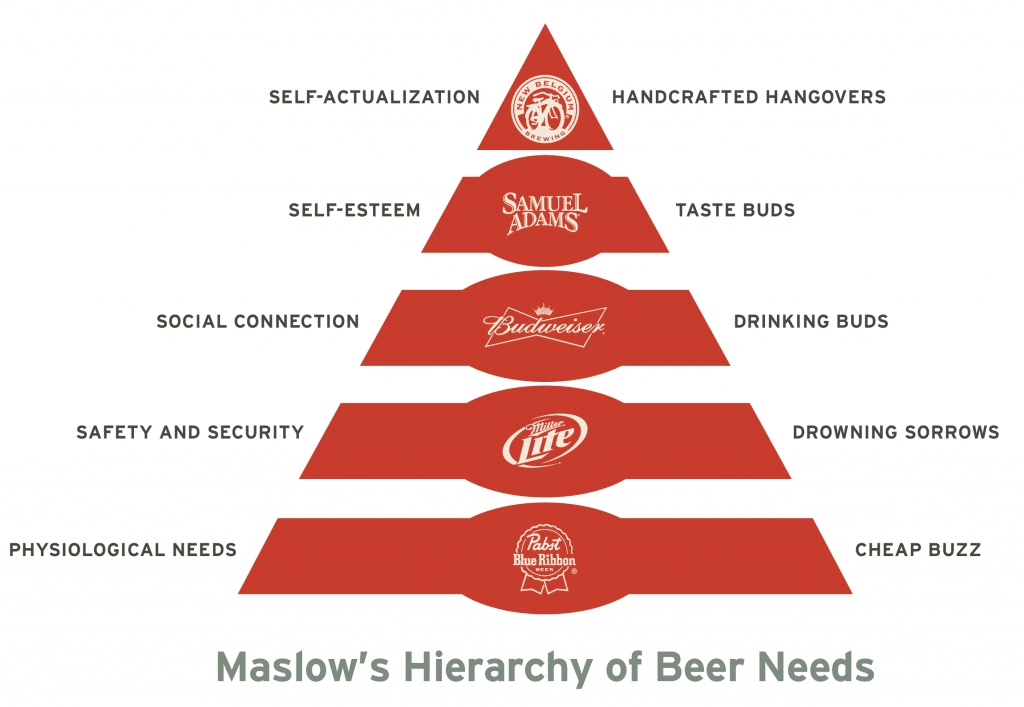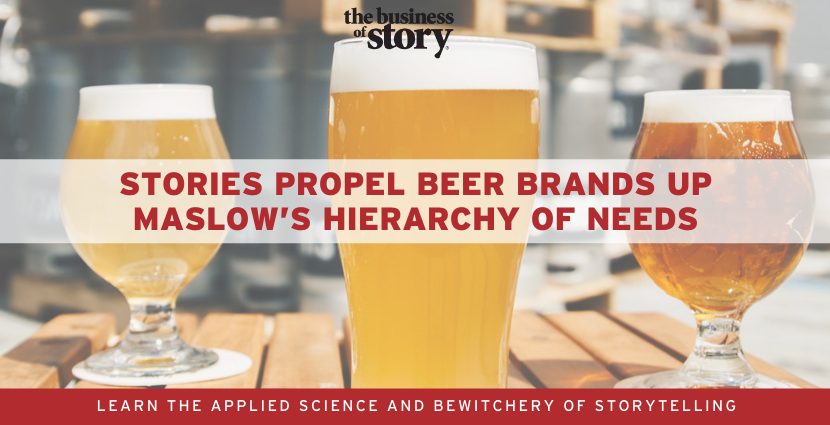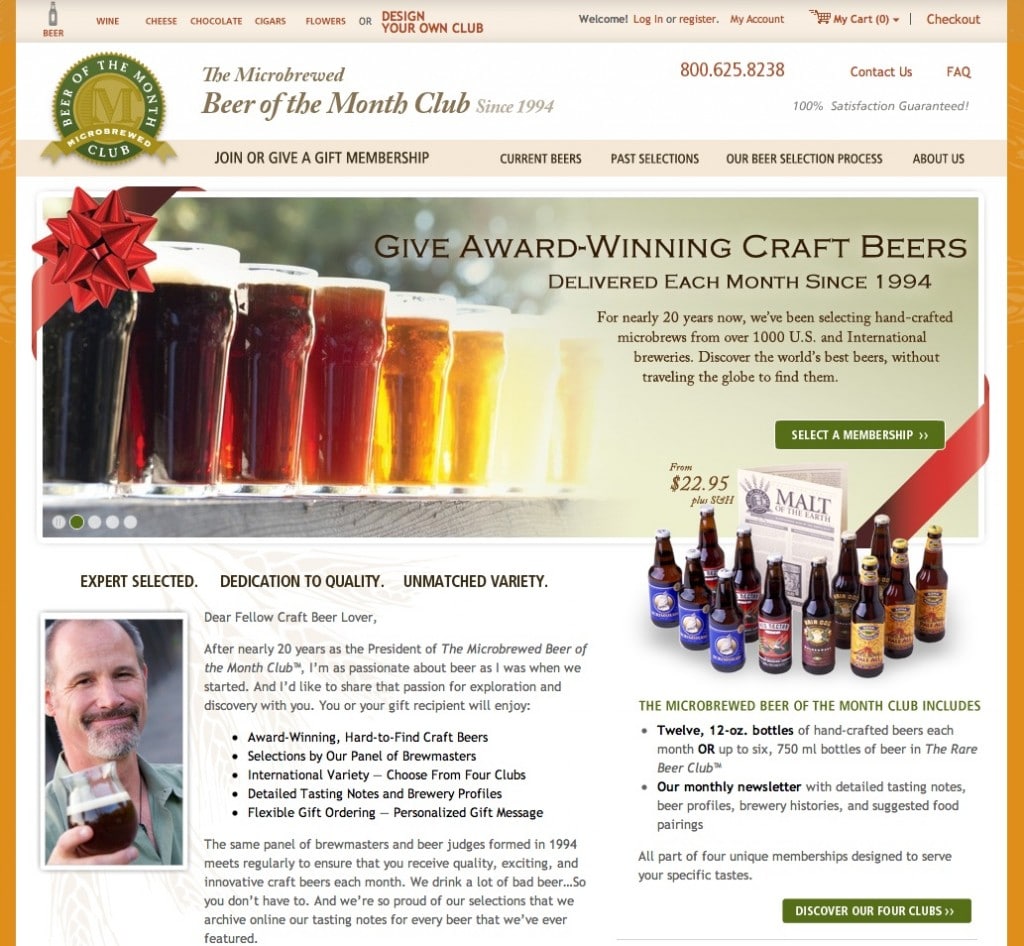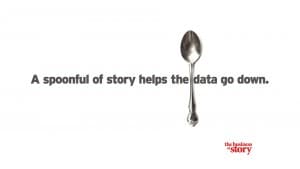I was leading a brand storytelling workshop the other day and explaining the relationship between how a well-told story engages an audience, which boosts them up Maslow’s Hierarchy of Needs pyramid from basal physiological needs to personal enlightenment, and therefore elevates perceptions from low-priced commodity to premium brand status.
The audience basically said, “Huh?” I had lost them.
I returned to the agency seeking a better explanation. Defaulting to an industry I’m very comfortable in – Beer – I polled the Park&Co team on their perceptions of beer brands and the stories they tell in the different levels of the behavioral pyramid. Here’s what I learned.
Cheap Buzz – At the base of the pyramid, where physiological needs for survival dwell (including our need for air, shelter, water, food, sleep, and beer), Pabst Blue Ribbon was the resounding winner. Coors Light and something called Natural Ice were close seconds. One response summed up these basement dwellers:
“I’m a freshman in college. I’ll take what I can get.”
Drowning Sorrows – A step up the pyramid into the safety and security zone – the irony doesn’t escape me – Miller Lite was the clear winner in this category. Miller’s price point is a bit higher than the basement beers, and the brand positioning in its ardent drinkers’ minds is that it’s the safe bet when ordering a lite beer. Miller’s “Man Up” campaign took a direct shot at guys who don’t automatically order a Miller Light, and it ends with the line, “Taste Greatness.”
Drinking Buds – The third level in Maslow’s hierarchy is the need for social connection among family and friends. Budweiser bubbled over in this category as the American beer that connects you with your drinking pals. If you have watched any Super Bowl, you’ll see brand stories that sway between humorous “life of the party” commercials, to poignant tales featuring Budweiser’s iconic Clydesdale horses cantering about America.
Taste Buds – The beer that captured the self-esteem level of confidence and achievement was Samuel Adams’ Boston Lager. Sam Adams started as a microbrewery in 1984, and it has maintained its image of always setting the highest standards for brewing distinctive and flavorful beers. The company mantra even speaks to self-esteem and confidence, “Everything we do is for the love of beer.”
Handcrafted Hangovers – At the top of the list, the beer that celebrates self-actualization in its drinkers (at least to the tastes of our team) turns out to not be a beer at all, but the entire category of craft beers. It makes sense when you think about it. Beer is a commodity, and mass-produced beers, no matter how well their story is told, cannot escape the powerful gravitational pull of commodity thinking in consumers. Our self-actualization through the proverbial beer goggles is seen in the small, stalwart local brewers that create full-bodied, robust beers that compete head-to-head with the big boys in a David & Goliath brawl for positioning in our brains. And guess what? Those craft beers have a diehard, loyal following and command a premium price, too.
Based on my team’s beer experiment with Maslow’s Hierarchy of Needs, the correlation between each segment and its customers’ relationship to the brand is quite clear. In other words, the higher the level on the hierarchy, the more engaged and committed the customer is to the brand, regardless of price. It’s not to say that every brand is going to be at the top of the hierarchy, but one would be wise to know where the product and/or service fit and the correlative customer loyalty.
If your product or service may at first appear to be simply a commodity that serves physiological needs, don’t despair. By creating a very specific and focused customer persona, you can craft your brand stories to add value to their purchase and increase the engagement with your customer base. Brands that tell a better story move up the hierarchy in their customers’ minds, raising them from low-priced commodities to premium brands.













at 12:31 pm
[…] Originally Posted on Park Howell: The Power of Storytelling. […]
at 6:24 am
[…] Howell, P 2017, ‘Stories propel beer brands up Maslow’s hierarchy of needs’, date accessed 6th May 2018, <https://businessofstory.com/stories-propel-beer-brands-up-maslows-hierarchy-of-needs/> […]